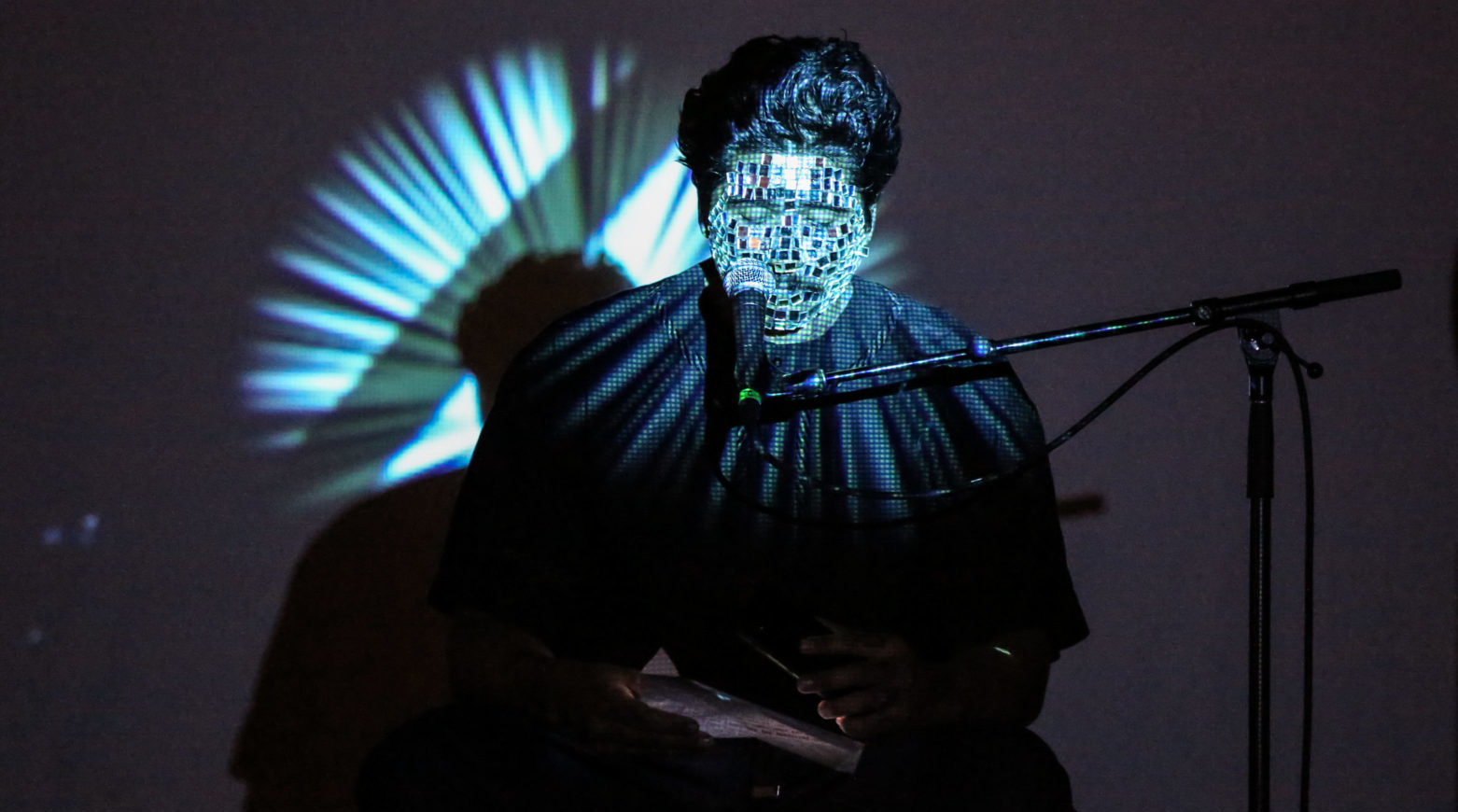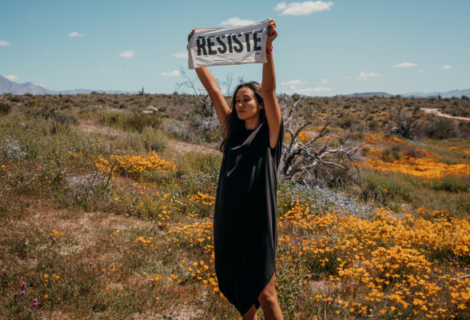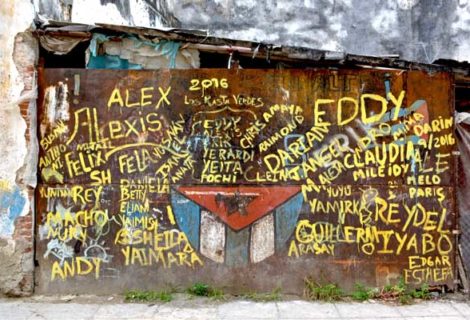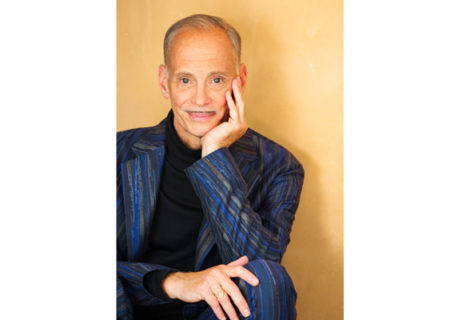Crossfade LAB: An Experiment Worth Being Part Of
Last October I went to an event called Crossfade LAB and I was mind blown. Rita Indiana, a bad ass musician and writer from the Dominican Republic and equally awesome Tucson-based band Calexico, were sharing the stage in a spoken and musical exchange about borders, intersections and Juan Gabriel. It was, in my view, one of the most intentionally curated, well executed Latinx events I’ve seen in Phoenix; an insightful exploration of how music, art, politics, and geography interact.
Last Monday, Crossfade LAB, organized by Celebración Artística de las Américas (CALA), brought to Phoenix and unlikely pair: Famous singer/song-writer Julieta Venegas and multidisciplinary artist from Los Angeles, Rafa Esparza. It was an interesting experience, both amusing and uncomfortable throughout the night. At times I was lost in the beauty of the moments brought forth by the artists, like when Julieta screwed up in her rendition of Juan Gabriel’s Me Nace del Corazón, laughed at herself and played it again until she got it, or when Rafa, who is queer, slow danced with another man to Julieta’s slow version of Ya Conocerán. Other moments I was lost trying to figure out the central theme of the conversation, the connection between the artists’ experiences and why sometimes it felt like a Julieta Venegas-loving fest, with her performing more than Rafa and receiving gifts on stage.
Then it hit me that this event is called Crossfade LAB. While October’s event was more clearly centered on the Crossfade between Rita’s and Calexico’s border experience (both artistic and personal) in Arizona and in the Dominican Republic, last Monday’s event felt more like an experiment in many ways:
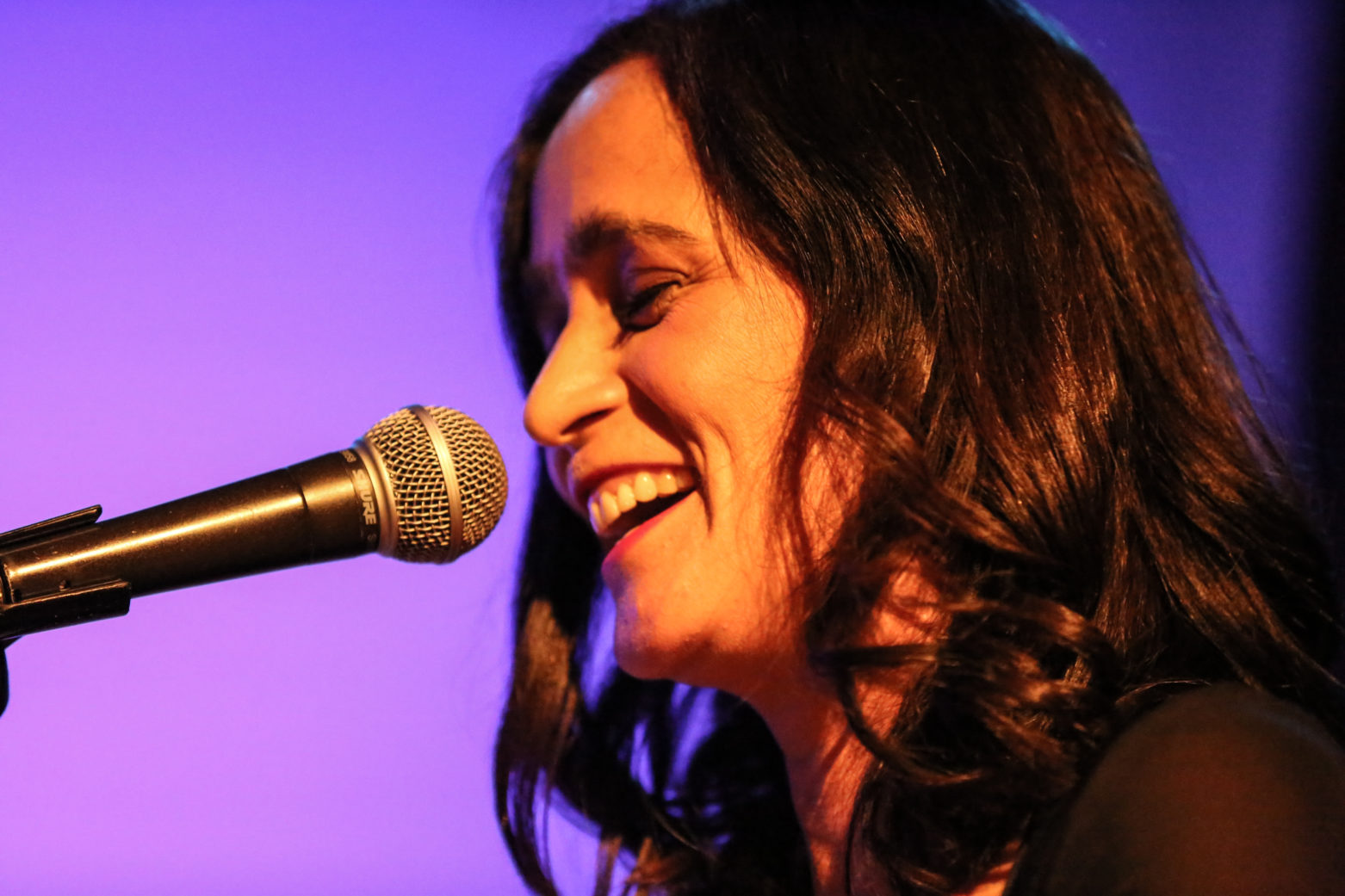
Julieta Venegas playing her piano. (Photo by Chandra Narcia)
1. Asking Julieta Venegas to play one of her earlier songs on the piano, which she originally composed with her accordion. She couldn’t get the chorus right and she said it was because of the different sides of the brain that are used when playing the accordion and the piano. She tried and tried until she got it. It was a beautiful and vulnerable moment in which Julieta fans were practically seeing their singer rehearse in front of them.
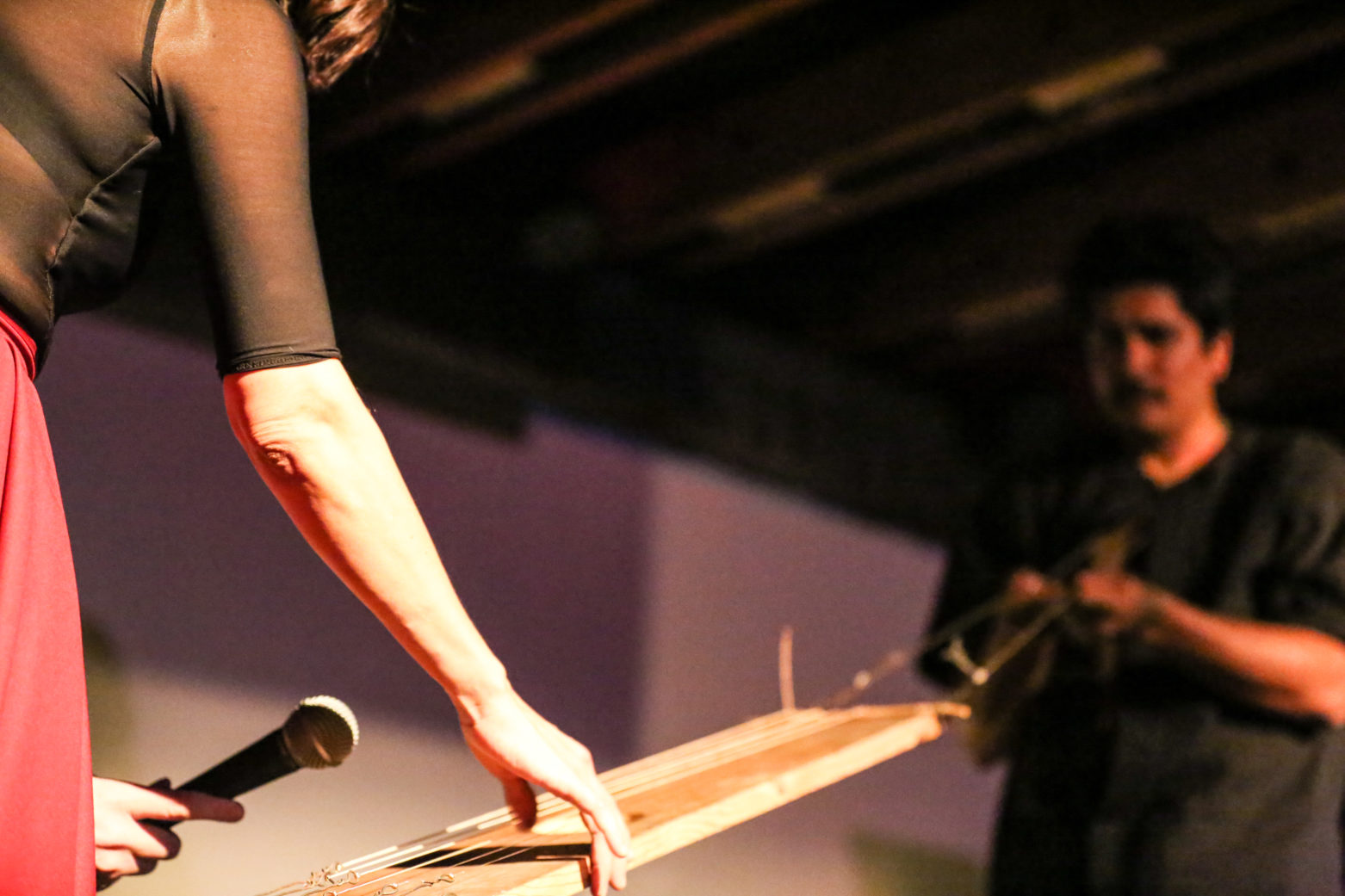
Julieta Venegas playing the guitar made by Rafa Esparza. (Photo by Chandra Narcia)
2. Merging Rafa’s performance art with Julieta’s music. For the grand finale, Rafa, whose art largely involves the making of things, created a guitar of sorts by tying a set of strings to blue agaves and then to his own body. Julieta then walked on stage, struck the chords of the guitar and sang. This moment forced us all to patiently observe what was happening and at times we didn’t understand but we kept watching.
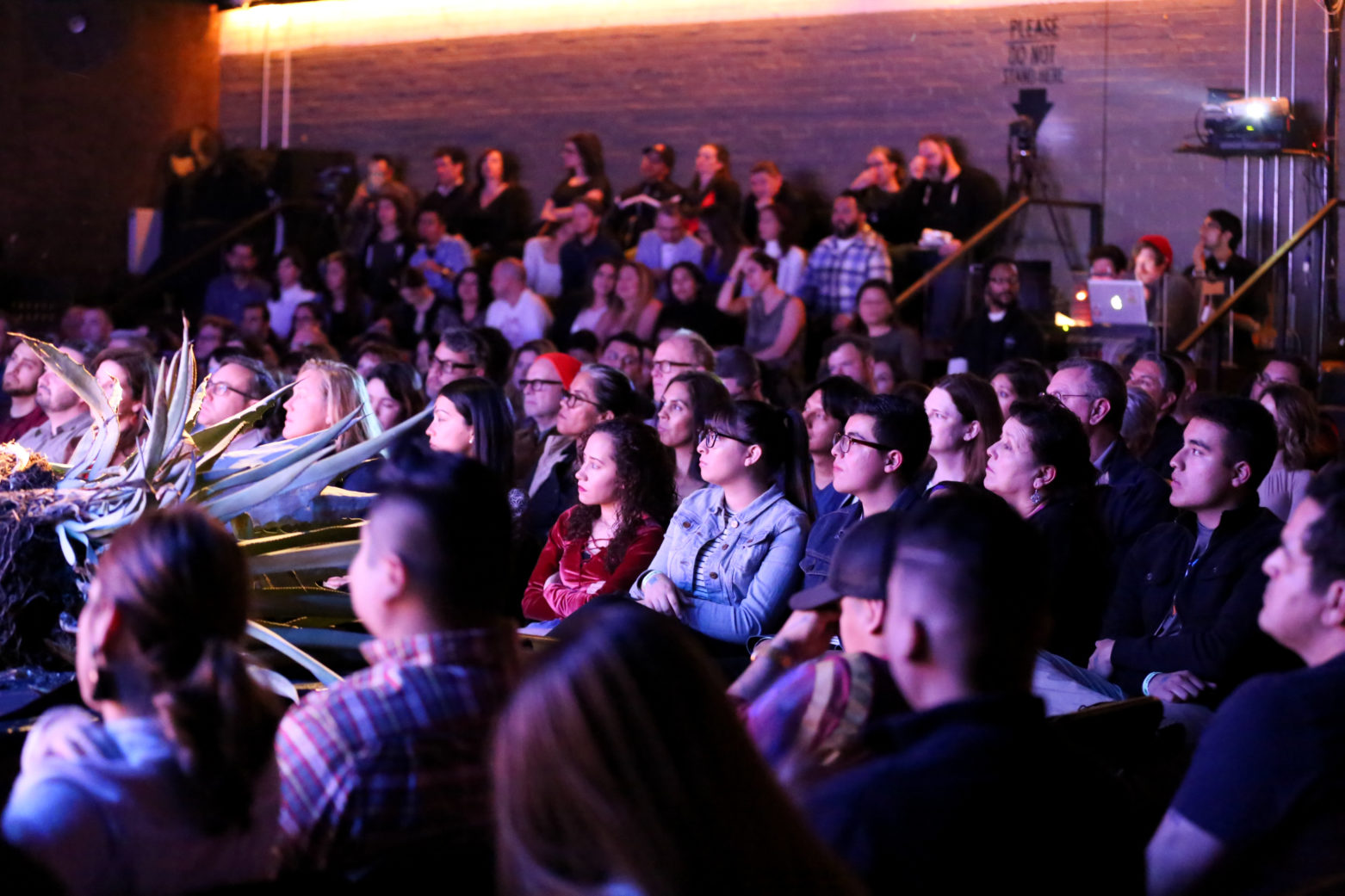
Full house at the Crescent Ballroom. (Photo by Chandra Narcia)
3. Bringing together a pretty diverse audience. Some people were there to hear two artists speak and to experience their art, others were there because they like to support Latinx events in Downtown Phoenix, and others only wanted to see Julieta Venegas sing and couldn’t care less about Rafa Esparza. At one moment, a heckler yelled out that she didn’t want to hear him speak anymore and wanted Julieta to keep singing. Bringing together people of different backgrounds is itself a test.
Josh Kun, who moderated the artists’ conversation opened with remarks that included the following statement:
“The goal of the Crossfader is not to erase the song that’s on input 1 and replace it with the song that’s on 2. The goal of the Crossfader is to figure out how we go from song one to song two by establishing points of connection.”
This time, I saw less Crossfade and more LAB, but I look forward to either of those in the next two events they have planned for the year. Because so far, I’ve heard meaningful conversations with four great artists from Latin America and the U.S. at a sold out, quality event, and that’s a huge win for La Phoenikera.

